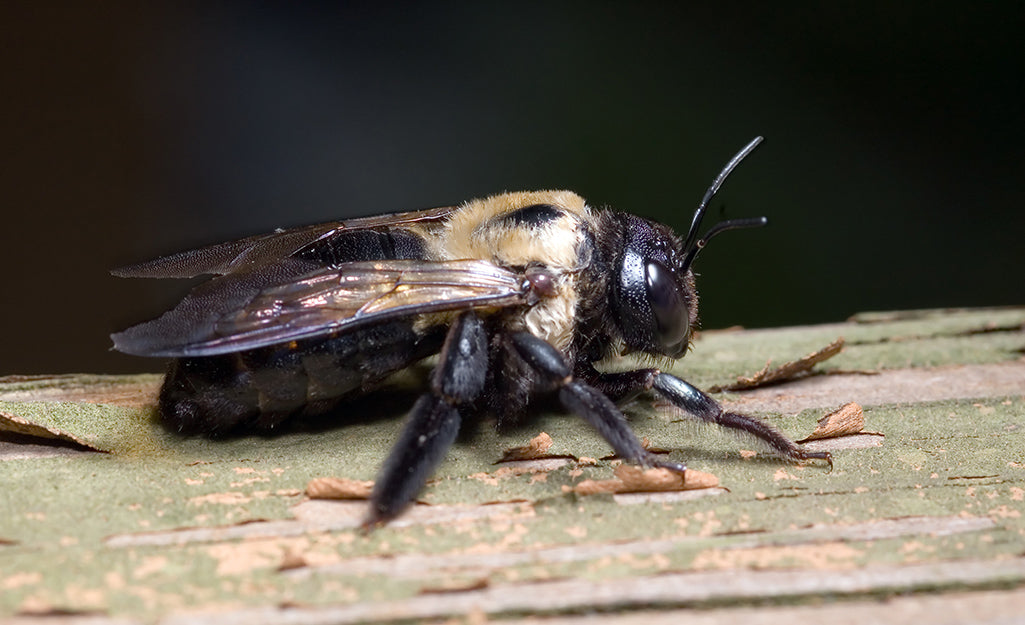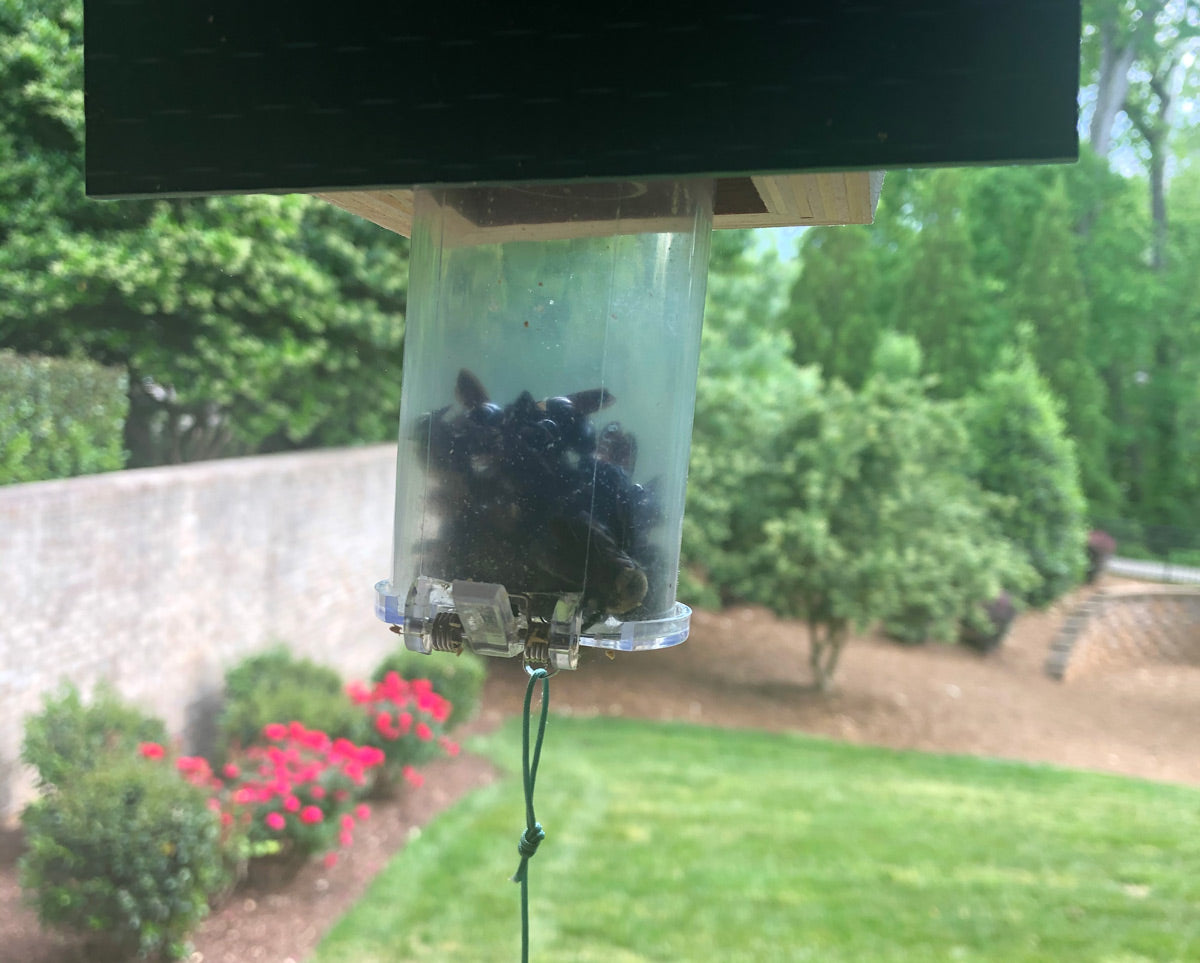Bears do it. Hedgehogs do it. Heck, even some squirrels hibernate in the winter1! But did you know that carpenter bees do as well? As with other species in the animal kingdom, carpenter bees require a safe and secure place to wait out the cold winter months. A good “hibernation chamber” not only allows them to conserve energy but also acts as an insulated barrier to protect their eggs from the harsh temperatures outside. Unfortunately, their preferred home might just be the siding or roof of your home. In order to answer the question, “Why do carpenter bees drill holes?” we have to take a closer look at some of their habits and what makes them distinct from other bee species.

Why Do Carpenter Bees Drill Holes?
Unlike honeybees, carpenter bees are solitary creatures that typically exist together in very small groups. As a result, even if they were so inclined, they lack the resources and numbers to create the extensive structure that is a hive. Instead, the carpenter bee must find other means of seeking protection from the elements – namely, boring into wood.
A common misconception is that carpenter bees eat wood. While they can cause extensive damage to a home if left unchecked, they don’t actually eat wood per se. Since carpenter bees do not have teeth, they use their powerful mandibles to drill holes into the wood in circular motions. Over time, this results in a network of internal tunnels and chambers.
After the entrance to the new nest has been created, the carpenter bee female will make a sharp 90-degree turn and begin drilling parallel to the outer surface of the wood. Inside each of the tunnels that a carpenter bee female drills, there are typically five to six smaller chambers where she will lay her eggs.

Within each of these cells, the female carpenter bee will deposit pollen alongside the egg. When the carpenter bee egg hatches in the spring, this pollen will serve as a great first meal, providing vital nutrients to the larva. In the meantime, once the female has deposited both egg and pollen into a cell, she will work backwards toward the entrance of the nest to “seal” each chamber. To do this, the female utilizes regurgitated wood pulp that she has gathered from her thorough excavations2.
In the spring these young carpenter bees emerge from their nests, ready to mate and feed.
Do Carpenter Bees Reuse Holes?
All of that drilling takes a carpenter bee female a lot of precious time and energy to complete. If it’s an option, carpenter bees would much rather find an existing nest, or reuse their own. They may also seek out the nests of other abandoned carpenter bees. These tunnels can be used season after season, with further excavations made to accommodate the carpenter bee family if needed.

How Do You Fix Carpenter Bee Holes?
At Best Bee Brothers we take a two-pronged approach to treating carpenter bee holes: prevention and maintenance. Ideally, you want to catch these pesky wood-boring creatures before they begin damaging the structural integrity of your wood siding or roof. To help you do just that, we designed our patented Best Carpenter Bee Trap, which uses our comprehensive knowledge of carpenter bees to your advantage. Since carpenter bees cannot fly directly up or crawl up plastic surfaces, once they enter the receptacle, they are effectively trapped. For more information about how our traps work, visit the How Our Traps Work page.
But sometimes it’s too late for prevention...
If carpenter bees have already nested in your home, it’s critical that you plug their holes to prevent further damage. We recommend using wooden cork plugs to proactively fill the existing carpenter bee holes early in the spring season. Since these bees are much more inclined to use existing nests than drill new holes, plugging existing nests can sometimes be enough to solve the problem before it begins again, keeping your home free of carpenter bees!
- Eva Frederick, “Here’s How Hibernating Squirrels Live for Months without Water,” Science, October 1, 2019, https://www.science.org/content/article/here-s-how-hibernating-squirrels-live-months-without-water.
- Michael F. Potter, “ENTFACT-611: Carpenter Bees,” Entomology, University of Kentucky, September 8, 2018, https://entomology.ca.uky.edu/ef611.









Leave a comment
All comments are moderated before being published.
This site is protected by hCaptcha and the hCaptcha Privacy Policy and Terms of Service apply.